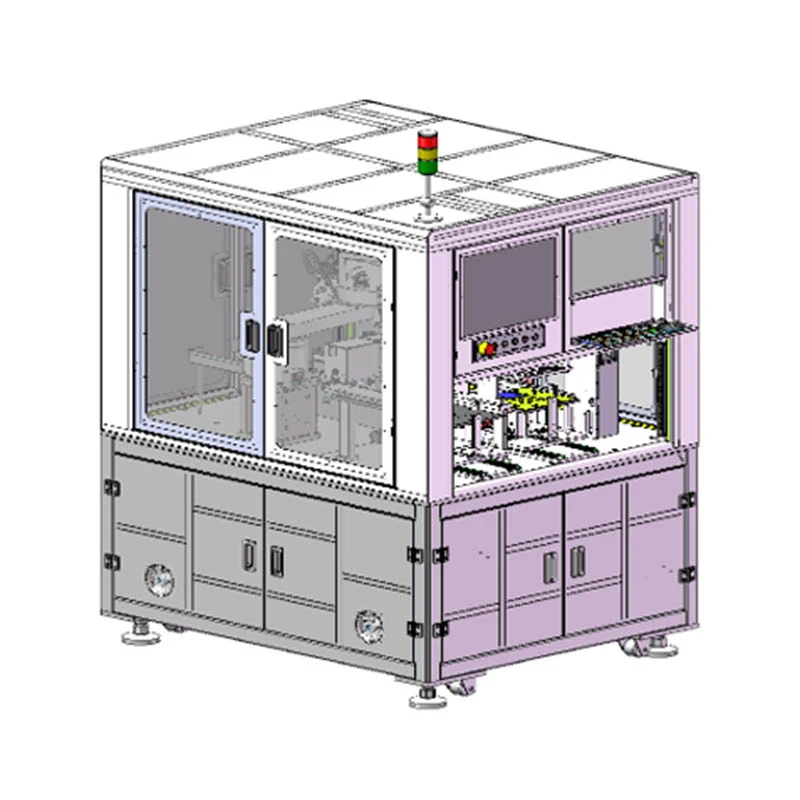With demand for MLCCs (Multilayer Ceramic Capacitors) growing quickly in consumer electronics, new energy vehicles (NEVs), and 5G communications, MLCC production machines have the features of "high productivity, high precision, and high automation"—they have become very important for component manufacturers to improve their competitiveness.In 2024, the global MLCC machine market scale exceeded USD 6.8 billion. And their advantages in production efficiency and product quality directly drive improvements in both MLCC production capacity and yield. This fits the industry’s "miniaturization and high capacitance" development trend.

1. High-Efficiency Mass Production: Breaking Capacity Bottlenecks
MLCC machines can do continuous production with modular design. A single production line can make 12,000–15,000 units per hour—this is over 50% more than traditional intermittent equipment (which makes 6,000–8,000 units per hour).Data from an electronic component manufacturer shows that after introducing a new-generation MLCC machine:
Monthly production capacity rose from 80 million units to 140 million units.
Unit energy consumption decreased by 22%.
This effectively addresses the MLCC demand gap of "millions of units per vehicle" in the NEV sector, increasing capacity fulfillment rate from 65% to 92%.
2. High-Precision Manufacturing: Ensuring Product Quality
To address the micron-scale dimensions and multi-layer stacking characteristics of MLCCs, this equipment is equipped with a laser positioning and servo control system.
Lamination accuracy reaches ±1μm.
Electrode printing tolerance is controlled within ±0.02mm.
Capacitance deviation of components is ensured to be ≤±5% (far exceeding the industry standard of ±10%).
Testing data shows that for 01005-spec (0.4mm×0.2mm) MLCCs produced by high-precision MLCC machines:
Yield rate reaches 99.2%, reducing the scrap rate by 2.7 percentage points compared to traditional equipment (96.5%).
Annual raw material cost savings exceed RMB 3 million.
3. Full-Automation Integration: Reducing Costs and Boosting Efficiency
MLCC machines combine the whole process of automatic feeding, lamination, cutting, and inspection. They don’t need manual work, and this lowers labor costs by 30%.
These machines have AI visual inspection systems. They can find appearance defects (like cracks, missing corners) in real time. And their inspection efficiency is 15 times higher than manual inspection.
Missed detection rate drops to below 0.03%.
A factory reported that after automation transformation:
Equipment failure rate decreased from 3.2 times per month to 0.8 times per month.
Production continuity increased by 85%.
Workload of operation and maintenance personnel reduced by 60%.
4. Multi-Spec Compatibility: Flexibly Responding to Market Demands
This equipment can produce full-spec MLCCs from 01005 to 2220. When changing products, you only need to adjust parameters and molds. This shortens the changeover time from 4 hours (with traditional equipment) to less than 1 hour.
Because of this compatibility, a manufacturer can quickly switch between producing "high-capacitance MLCCs for consumer electronics" and "automotive-grade temperature-resistant MLCCs":
The product response cycle shortened from 15 days to 7 days.
Market order delivery rate increased by 40%.
This enables adaptation to demand changes across multiple fields.
| Performance Indicator | MLCC Machine | Traditional MLCC Production Equipment | Advantage Margin |
|---|---|---|---|
| Hourly Capacity | 12, 000–15, 000 units | 6, 000–8, 000 units | Over 50% increase |
| Lamination Precision | ±1μm | ±5μm | 80% precision improvement |
| Product Yield Rate | 99.2% | 96.5% | 2.7 percentage points yield increase |
| Changeover Time | ≤1 hour | ≥4 hours | Over 75% reduction |
| Monthly Failure Rate | 0.8 times | 3.2 times | 75% reduction |
Currently, MLCC machines are evolving toward "higher precision and greater intelligence":
Some equipment already supports 5G + Industrial Internet remote operation and maintenance.
They adapt to the production needs of "high-capacitance MLCCs with over 1,000 layers," and this helps supply high-end MLCCs in automotive electronics and energy storage fields.
Since they are core equipment in the MLCC industrial chain, their technological advancement will keep driving component manufacturing toward "high efficiency, high quality, and high flexibility," and this supports the innovative development of downstream industries.
